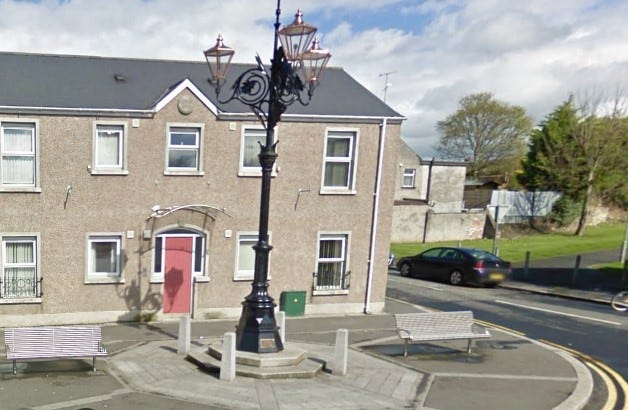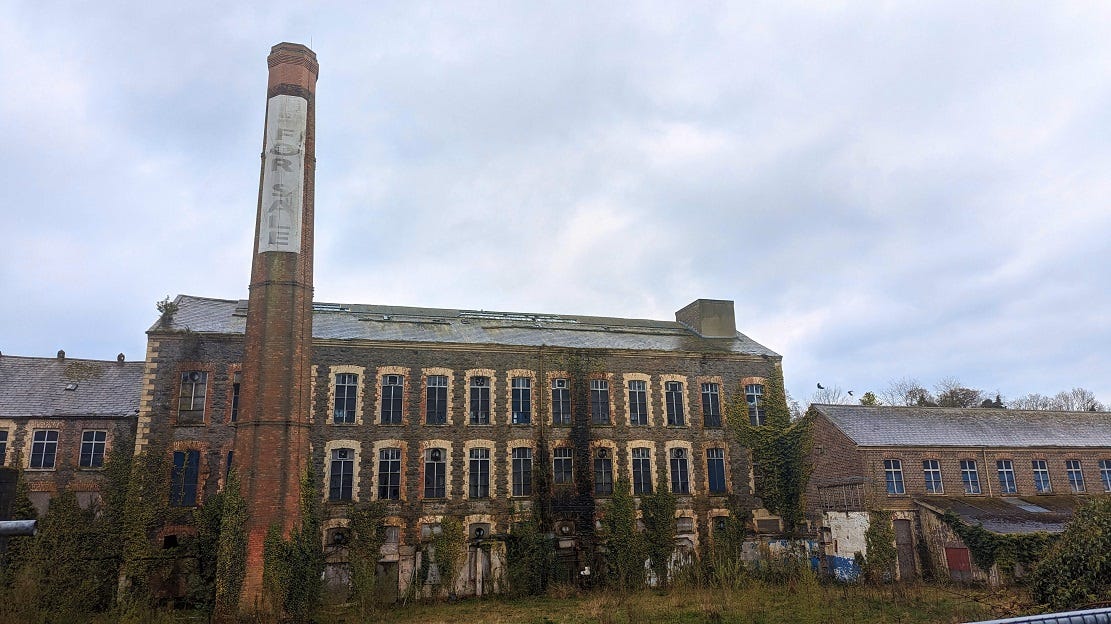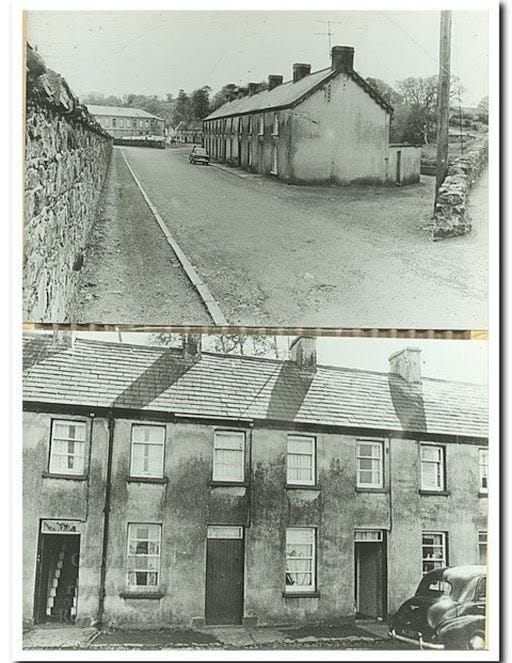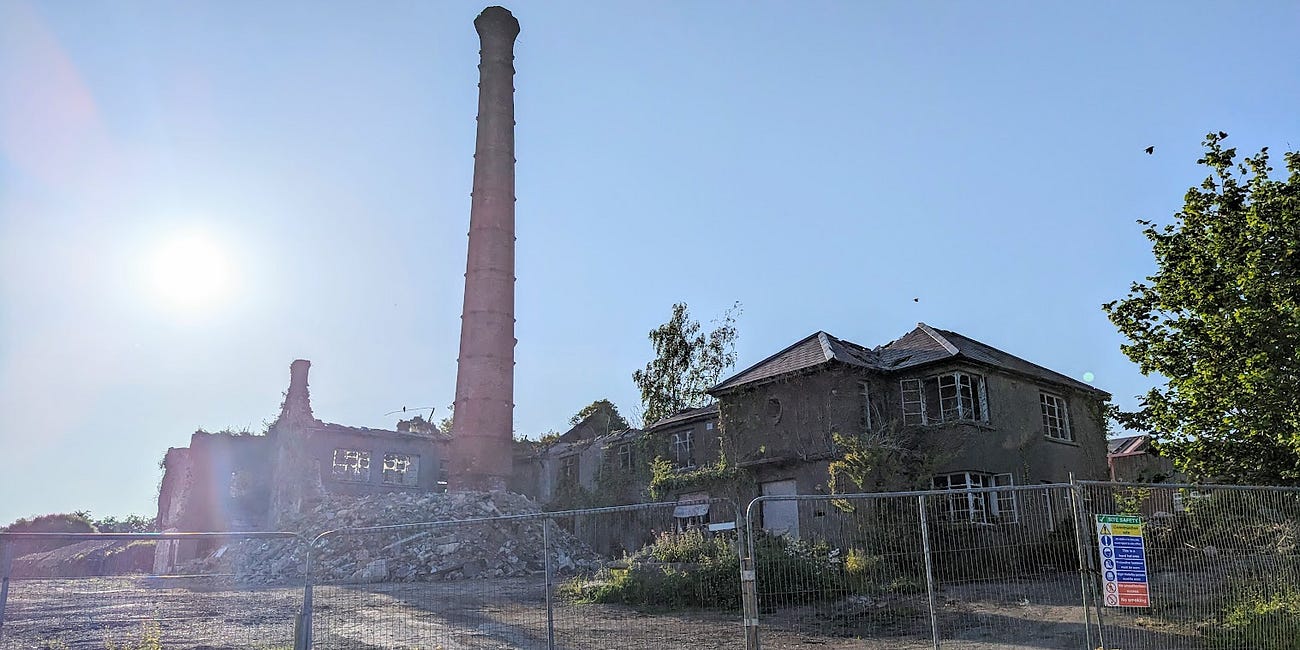Can Tandragee Mill weave itself a future?
also .. slavery and trafficking unit carry out search of business premises in Armagh
Welcome to the Armagh I newsletter. Great to have you here! This newsletter lands in your inbox every Tuesday and Friday morning with a different slant to our website. Help us to connect with others by sharing this edition. If you have received this newsletter in another format outside of a subscription email or been sent it by a friend, you can subscribe here
If you heard a horn blowing over Tandragee would you know what it was for? Well, certainly past residents of the town would have been able to tell you.
During the town’s industrial boom in the latter half of the nineteenth century, a horn would sound over Tandragee, signaling the 6am start time to the workers of Sinton’s Mill. The workers would then toil for two hours before enjoying a 30 minute break for breakfast.
This once bustling Mill was a hub of textile production, churning out fabric like a well-oiled machine. But, like a threadbare sweater, the mill eventually fell out of fashion and was left behind by the modern world.
It was a true powerhouse of production, with over 600 workers spinning and weaving their stories into the very fabric of time.
The industry was so important and was the thread that held our community together.
The linen trade in particular was a real money-spinner with Irish linen renowned world-wide. But what has become of our industrial past?
Related: Plans for multi-million pound garden centre, restaurant and apartments at historic mill
It’s sad to say but this artform has long since left our towns and villages and with it went the skill and the community togetherness which came with it.
And it’s fair to say that most factory owners did look after their employees - for example the Sinton family who owned the Mill built houses, namely Mill Row, for the workers -charging only a peppercorn rent. The street has since been demolished.
The weavers in these mills were a tight-knit community and many a person learnt skills which carried them through life. Sinton’s Mill was always on the lookout for new apprentices to pass on their skills to, and they took great pride in seeing the next generation of weavers take up the mantle.
Related: Tributes paid following the passing of ‘one of the country’s last flax scutchers’
Tandragee Mill was still in production, albeit a smaller operation employing 200 people, until 1996. The building has tried to rise like a phoenix from the ashes, several times, with approval being given for the development of 172 residential units – in the form of 59 houses and 113 apartments – back in 2009.
But like an old bobbin that's run out of thread, the mill eventually came to a halt. It’s sad ruins find company with approximately 400 other mills in Co. Armagh and over 5000 mills across the whole of Northern Ireland. These ruins are now left as barely-standing memorials to our industrial heritage.
The property, which consists of a Grade B2 listed mill building, covers a site extending to some 2.8 acres, and occupies a prominent location at the bottom of the town, close to the junction of Glebe Hill Road, Scarva Road and was sold to new owners in 2014 after being bought for £110,000.
The extensive, ornate edifice is currently back on the market with an asking price of £450,000
Related: Young people warned to stay away from derelict Tandragee mill amid antisocial behaviour
What would you like to see happen to the mill?
Headlines
Son appeals for help after van crashed into dad’s car and driver fled scene on foot
Bessbrook electrician caught transporting four kilos of cocaine jailed
Two brothers in court over burglary incidents involving elderly pensioners living alone
Man, woman and two dogs rescued following arson in Lurgan
Modern slavery and trafficking unit carry out search of business premises in Armagh
Construction firm and Council deny safety breaches which led to man’s death in Co Armagh forest park
Richhill man accused of rape on Isle of Man bailed to reside on island until trial
Police appeal following recent attempted burglaries in Newry
State of Orchard Leisure centre in Armagh branded ‘unacceptable’
Hospitality businesses report being in ‘major trouble’ and at ‘the point of no return’
Ticket Giveaway
Congratulations to Caroline Speers, you are the lucky winner of a pair of Cinema tickets. Contact our office on 02837443043 to arrange collection. Enjoy!
Don’t forget to enter every week for your chance to win. Simply click here!!
Lookback
Nowadays we drive past without so much as a second glance towards what was once a world-famous enterprise, Gilford Mill.
The success of the mill was attributed largely to the exceptional ‘bleaching power’ of the river Bann which created ‘extremely fine white’ linen and yarns.
According to The British Trade Journal in 1890, so ‘well appreciated’ was the river that linens would be sent from Belgium to Gilford to be bleached on the banks of the Bann.
The journal states that “The looms of Europe wove yarns spun in Gilford”.
The sought-after substances were transported all over the world, “Gilling twines were exported to the Adriatic and Mediterranean countries, twine for salmon-fishing to British Columbia, carpet threads, book binders' thread, extra strong threads for leather and thick cloths, and fine threads for the sewing machinist and lace-maker were exported to United States, South and Central America, Brazil, Australia and the rest of the British Colonies."

Past issues
Water Street: Portadown's forgotten past
Scarva really getting into the swing of things!
Have you been berry curious about the fate of Fruitfield Jam Factory?
For all you newbie subscribers welcome to the Armagh I newsletter. Great to have you here! This newsletter will land in your inbox every Tuesday and Friday morning and is a different read than our normal content. Help us connect with others by sharing this edition.








